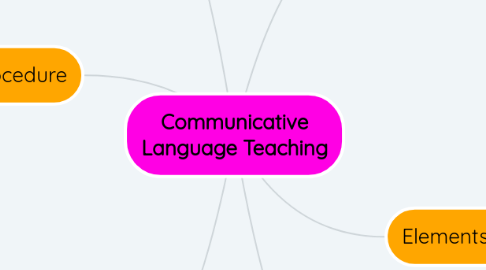
1. Design
1.1. They must simulate or be part of a real communication situation, appearing in a social environment where learners can interact.
1.2. They must cover several environments of use.
1.3. In the case of ANL, these should include the specific (more specific and scientific) environment related to the research topic.
1.4. They usually involve other skills.
1.5. They are usually a function of which part of the learners have some of the information, and the rest of the learners have the remaining information so that they can access the full information when interacting.
2. Procedure
2.1. Over time, the foreign language process has been the subject of various research studies. The study of language teaching and learning has advanced and changed course according to the different stages of the development of intellectual science and the needs of social development.
2.2. Communication is not just a product, but a process, in a specific situation, between specific interlocutors, for a specific purpose. Therefore, it is not enough for learners to absorb accumulated data: vocabulary, rules, functions..., they must also learn to use this knowledge to negotiate meanings. To do this, they must engage in real tasks, in which language is a means to an end rather than a means of accomplishment.
3. Advantages and Disadvantages
3.1. Advantages
3.1.1. Increase motivation for language learning.
3.1.2. Encourage learning through teamwork, develop social skills, improve self-esteem and team cohesion.
3.1.3. To enable learners to use a second language in a real communicative environment.
3.2. Disadvantages
3.2.1. If there is no comprehensive educational plan, the process may be sidetracked and learning objects will not be produced.
3.2.2. Collaborative learning between learners must be monitored to ensure that the information received by the learners is correct.
3.2.3. Often there is no specific learning objective.
3.2.4. Due to the level of supervision required, it does not work in very large groups of learners.
4. Teachers and Students Roles
4.1. teachers roles
4.1.1. As teachers of foreign languages or other subjects taught in that language, such as natural sciences, biology and geology, geography and history, the main task of schools with bilingual English learning programmes will be to coordinate and stimulate the learning of these foreign languages.
4.1.2. Teachers must analyse students' needs, understand the learning points and ensure that their planned activities and projects produce a safe communication environment, so that students are not afraid of making mistakes when using the language and are confident that they are learning. In this way, the group can gain in learning progress.
4.2. students roles
4.2.1. He/she is the person responsible for his/her learning process.
4.2.2. They should play both active and passive roles in the process.
4.2.3. Learners are expected to be able to specify a wide range of communicative functions, identify pragmatic and social elements of language in these situations and apply communicative interaction strategies in the target language.
4.2.4. Aims to make learners' skills similar to those of native speakers.
